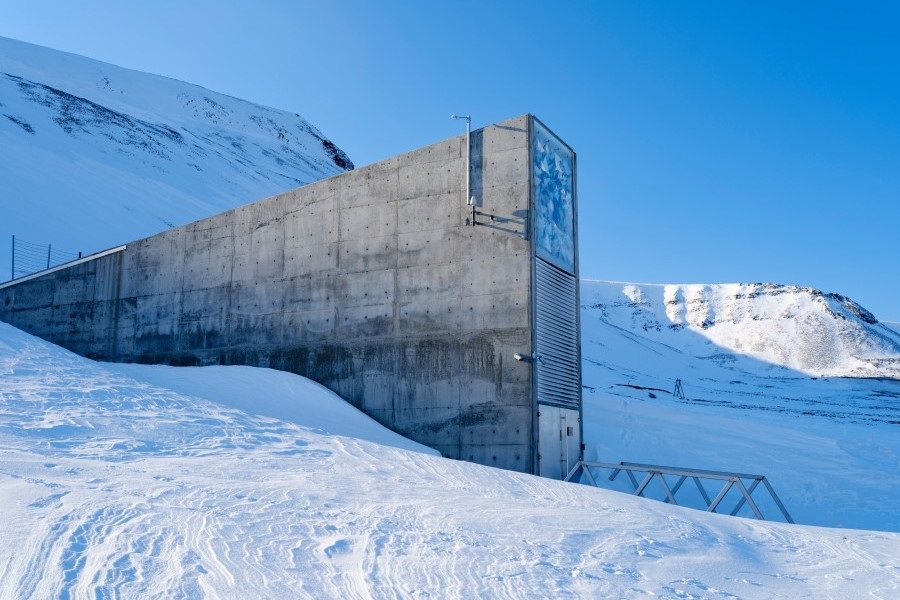
- Industry news
Industry news
- Category news
Category news
- Reports
- Key trends
- Multimedia
Multimedia
- Journal
- Events
- Suppliers
Suppliers
- Home
- Industry news
Industry news
- Category news
Category news
- Reports
- Key trends
- Multimedia
Multimedia
- Events
- Suppliers
Suppliers
“Doomsday vault”: Seed samples deposited in Norway to conserve crop diversity
Key takeaways
- Over 21,000 seed samples from global genebanks have been deposited into the Svalbard Global Seed Vault to safeguard crop diversity.
- The Svalbard Vault acts as a global backup for agricultural biodiversity, protecting unique and irreplaceable seeds from threats like war, climate change, and natural disasters.
- Despite progress, many genebanks lack backups due to limited resources, highlighting the urgent need for increased global investment in seed conservation and food security.

The latest batches of samples from genebanks worldwide have been deposited in the Svalbard Global Seed Vault, a secure, long-term storage facility in Norway that houses duplicate crop seeds.
Also known as the “Doomsday vault,” the facility is located deep inside the Arctic permafrost on the Norwegian island of Spitsbergen. It houses seed samples to help protect the world’s food supply, and functions as a global backup for crop diversity to safeguard against loss caused by events like natural disasters, war, or climate change.
Around 21,000 samples were deposited earlier this week, including new contributors from the Philippines and Peru, adding to the more than 1.3 million seed samples already stored in the seed vault.
Over 4,000 rice samples were collected from the Philippines, including traditional and climate-resilient varieties such as Dinorado and Milagrosa.

The World Vegetable Center’s shipment to Svalbard featured over 3,000 seed samples of 109 species collected across 30 African countries, including amaranth, jute mallow, Bambara groundnut, African eggplant, and okra.
Safeguarding seeds
Deposits also included culinary staples such as Filipino rice and Peruvian chili peppers, Ecuador’s chocho bean, and Moroccan lavender. A major deposit was from the World Vegetable Center (WorldVeg) genebank in Tanzania, which sent the largest-ever deposit of traditional African vegetable seeds to Svalbard.
The facility, which is managed by the Norwegian Government, Nordic Genetic Resource Center (NordGen), and the Crop Trust, receives new batches of seed samples every year.
Some genebanks have just started backing up, and others have no backups at all. This gap is driven largely by limited resources and a lack of investment in genebanks.
“Safeguarding seed diversity at Svalbard provides vital protection against natural or man-made disasters, pests, diseases, and accidents that could threaten our genebank in the Philippines,” says Jonathan M. Niones, division head and chief science research specialist at PhilRice.
Morocco’s Institute National de la Recherche Agronomique genebank also deposited over 860 samples of 42 species, including landraces and wild species of cereals, legumes, vegetables, and aromatic plants such as lavender and cumin.
“These samples are unique,” says Dr. Ali Sahri, the genebank’s manager. “Most were collected in Morocco by our scientists or contributed by local researchers; many have no duplicates elsewhere. Backing them up in Svalbard means they’ll be safe no matter what happens here at home.”
Ethiopia's International Livestock Research Institute (ILRI) also deposited new samples of trees, shrubs, legumes, and African forages.
“As we celebrate the newcomers and repeat depositors at this week’s opening of the Svalbard Global Seed Vault, we must also remember the urgent need to conserve the world’s crop diversity in myriad genebanks worldwide. Governments must step up support so genebanks can continue and expand their vital work and help secure enough food and nutritious diets where they are needed most,” says Dr. Stefan Schmitz, executive director of the Crop Trust.











